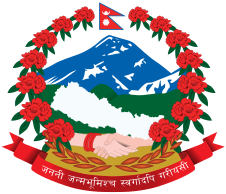5 Things You Didn't Know About the Everest Base Camp Trek

5 Things You Didn't Know About the Everest Base Camp Trek
The Everest Base Camp is one of the world's greatest adventures that attracts thousands of tourists to the top of the world every year. While it is well known among tourists that the adventure takes them to the base of the world's highest peaks, there is a lot that one does not get to know. These unknown facts surrounding the Everest Base Camp trek might just alter your impression of this legendary adventure.
1. You Can't Actually See Mount Everest from Base Camp
This is the paradox: After hiking for a fortnight to reach the Everest Base Camp in the Himalayas, you won't be able to see the peak of Mount Everest itself. This is because of the topography of the Khumbu Region; it prevents one from seeing the peak. However, one is surrounded by other majestic mountains such as Nuptse and Khumbu Icefall.
To see the peak of Everest itself during your Everest Base Camp trekking experience, it is necessary to climb to Kala Patthar (18,514ft) or Gokyo RI. This surprise awaits numerous trekkers who believe they have obtained front-row seats to the peak of Everest at the base of the mountain.
2. WiFi Connectivity Exists at 17,600 Feet
In one of the remotest parts of our planet, technology is slowly finding a place. The answer to your question is yes. You can have internet connectivity during your Everest Base Camp trip or at the base itself, which is at 17,600 feet above sea level. The Sagarmatha area is gradually finding internet connectivity through satellite internet services. Teahouses on your route to climbing Sagarmatha have internet connectivity at a small price.
This connectivity makes it easy for trekkers to share their experiences live, check the weather, and communicate with their families. Nevertheless, one can expect slower speeds with intermittent connections as one climbs. It is this blending of Sherpa traditions with internet accessibility that makes for a novel experience that typifies high-altitude trekking today.
3. Mount Everest Keeps Growing Each Year
This is not all; Mount Everest is not only not standing still. It is growing. Because of the constant pressure between the Indian plate and the Eurasian plate, Mount Everest is growing at a rate of 4 mm every year. This mountain-building process had been going on for millions of years.
At the beginning of 2020, it was jointly announced that the height of Mount Everest stands at 8,848.86 meters or 29,031.7 feet. This indicates that with every passing year, tourists embarking on the Everest Base Camp trek will be hiking to a taller mountain than those who did so in the past. This is because the height is gradually increasing with time.
4. Record-Breaking Foot Traffic: 3,000 Trekkers in a Single Day
The popularity of the Everest Base Camp Trek has attained incredible proportions. During peak days in the spring and autumn seasons of the trekking season, more than 3,000 tourists have been recorded to enter Sagarmatha National Park at one time. This is just a reflection of the increasing accessibility of high-altitude trekking.
This has resulted in the trail becoming one of the busiest routes in the world. This trend had transformed the trail from a distant hiking trail to a well-established route. Although it's sad to note that the trail is no longer as quiet as it used to be, this aspect has brought benefits to the Sherpa people.
5. Animal Slaughter is Prohibited Throughout the Region
The route to the Everest Base Camp takes one through a very religiously devout area with a high regard for the sanctity of life. Actually, killing animals is not allowed in the Sagarmatha National Park or in the Khumbu area because the majority of its people believe in Buddhism.
This means that all meats consumed in the region have to be brought in from lower elevations. This means that vegetarian meals have become widespread in many of the lodges and teahouses along the trail. Meat meals also become increasingly pricey the higher you climb. This is not only because it is imported at considerable expense because of the high costs associated with transportation. This reflects the reverence for life that is evident among the Sherpa people.
A trip to the Everest Base Camp is more than just hiking and sightseeing. These interesting and little-known facts include invisible peaks and Wi-Fi at high altitude to growing mountains, and sacred spaces. These interesting facts can add depth to your entire experience if you plan to visit the Himalayas or if you plan to visit the Everest Base Camp in the future. It is one experience that will leave you stunned, no matter which corner of the world you come from.


.png)
.png)






